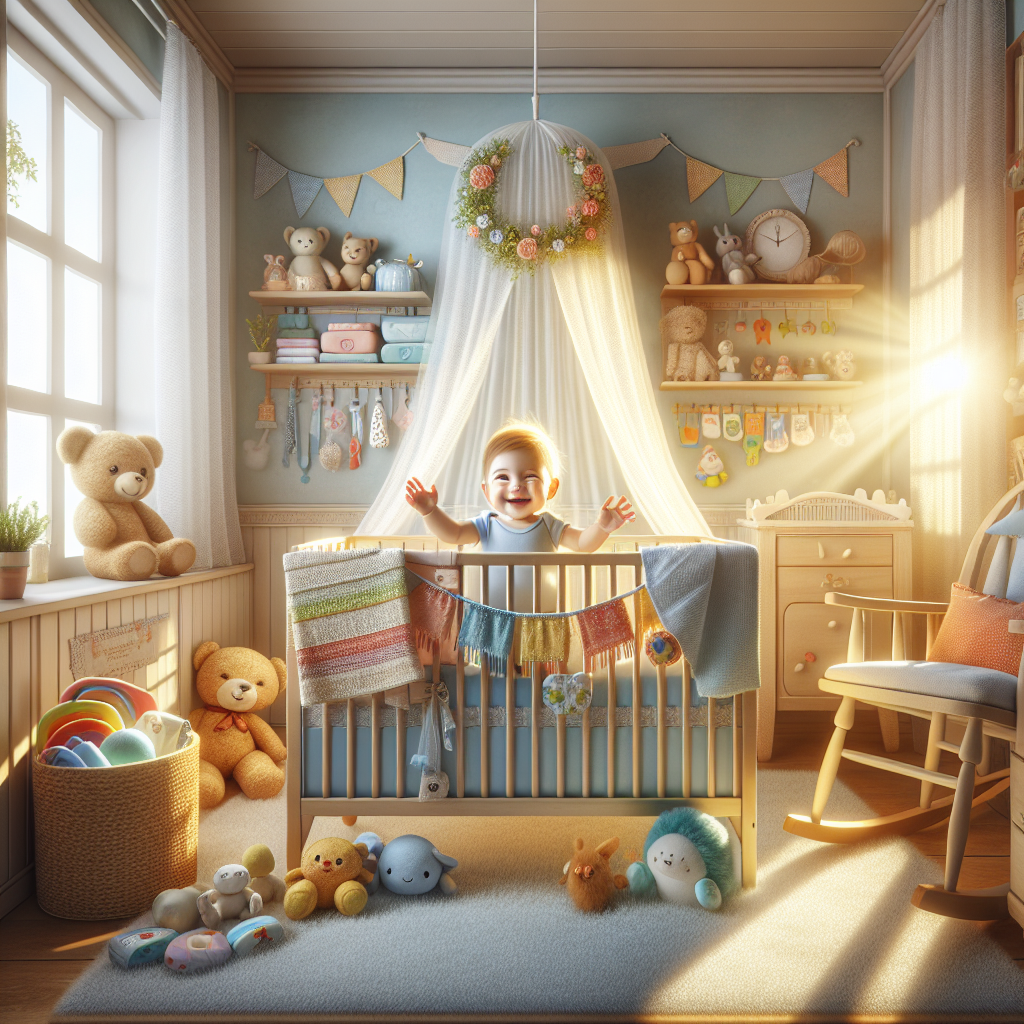In a world where trade policies and tariffs can change faster than a baby’s sleep schedule (and let’s face it, that’s pretty fast!), exporters of baby goods must stay on their toes. If you’re looking to ship your baby products into the USA, it’s crucial to understand the impact of new tariffs and trade policies that could disrupt your business plans—or, in the best case, create new opportunities!
So, grab your baby bottle and take a seat as we dive into the world of trade policies, tariffs, and how they affect the baby goods industry.

Why Tariffs Matter for Baby Product Exporters
Tariffs are basically taxes imposed by the government on goods imported into the country. These taxes can either increase the cost of your products or reduce profit margins, depending on the size of the tariff. For baby product manufacturers and exporters, a shift in tariff rates can cause ripples throughout the supply chain—from the factory floor all the way to the baby’s crib.
But why are tariffs on baby goods so important? Well, the USA is one of the largest markets for baby products in the world, with a growing demand for high-quality, safe, and innovative products. In fact, the US baby product market is expected to grow steadily over the next few years, driven by trends in sustainability, safety, and technology in baby accessories.
However, any changes to tariffs could mean higher costs for exporters, potentially pushing prices higher for customers—definitely not something parents want when they’re already juggling diaper prices.
The Current Tariff Landscape for Baby Products in the USA 🇺🇸
As of now, tariffs on baby goods in the US can vary significantly depending on the product category. But before you panic and start hoarding baby wipes, let’s take a look at the current tariff structure for popular baby products:
| Baby Product | Current Tariff Rate |
|---|---|
| Baby Apparel | 15% – 30% |
| Baby Strollers | 0% – 10% |
| Baby Car Seats | 0% – 2.9% |
| Baby Food & Feeding Bottles | 0% – 5% |
| Baby Cribs & Bedding | 0% – 6% |
| Baby Toys (non-electronic) | 0% – 5% |
| Baby Safety Products (e.g., gates) | 2.9% – 8% |
The above tariff rates may vary depending on factors such as the country of origin and specific trade agreements. For example, some goods may be subject to higher tariffs due to trade tensions with countries like China.
New Tariffs and Trade Policy Changes: What’s Coming in 2025?
Hold onto your diapers! Trade policies are shifting rapidly. In 2025, we can expect new tariffs, particularly as the USA continues to negotiate with trade partners like China, Vietnam, and Mexico, and attempts to implement new free trade agreements with emerging markets.
Here’s a breakdown of the possible changes:
- Increased Tariffs on Imported Baby Products from China 🇨🇳: If you’re sourcing baby products from China, watch out. The US government has indicated that tariffs on goods from China may increase, especially for non-essential baby items like toys and accessories.
- For example, baby strollers and bassinets could see an additional 10-25% tariff increase.
- Free Trade Agreements with Other Countries: On the flip side, the US is also negotiating free trade agreements (FTAs) with countries like Mexico and Vietnam, which could lead to lower tariffs for baby products coming from these countries.
- Vietnam in particular is becoming a big player in baby product manufacturing, especially for clothing and bedding. This could be a win for exporters in these regions!
- New Sustainability Initiatives: As the US market becomes more eco-conscious, expect sustainability-driven tariffs to be put in place. Countries that adhere to environmental standards (like using organic cotton or BPA-free plastics) might face lower tariffs, incentivizing companies to go green.
- Eco-friendly baby products from Mexico and Brazil, for example, may become more competitive.
How Will These Changes Affect Your Baby Product Exports?
If you’re planning to export baby goods to the USA in 2025, there are a few things you need to watch out for:
1. Higher Costs for Certain Products
If the tariffs on certain categories increase, you may face higher shipping costs, which means your profit margins could shrink. Some companies may choose to pass on these costs to consumers, which could affect demand.
For example, a high-end baby stroller might go from costing $150 to $180 if new tariffs are imposed. While that extra $30 might not seem like much to a parent in the US, it could affect a product’s sales volume, especially when competing with locally produced alternatives.
2. Supply Chain Disruptions
Higher tariffs can cause delays in the supply chain, especially if products are being sourced from non-FTA countries. If products are stuck in ports due to tariff-related delays, this could mean longer wait times for retailers—and ultimately empty shelves in stores. Not ideal for parents who need baby supplies ASAP!
3. Increased Competition in Tariff-Free Zones
If you’re sourcing your products from a country with lower tariffs (say Vietnam or Mexico), you’ll have a competitive advantage. With free trade agreements in place, your products could enter the US market with lower taxes, giving you a pricing edge over competitors who are still stuck with higher tariffs.
What Can Exporters Do to Navigate New Tariffs?
Don’t panic—there are ways to prepare and adapt. Here are some proactive strategies to help you navigate these shifting tariffs:
- Diversify Your Supply Chain: Consider sourcing baby products from countries that will benefit from free trade agreements, like Vietnam, Mexico, or even India. This will help you avoid tariffs that apply to Chinese imports.
- Invest in Sustainability: As eco-friendly products get tariff benefits, consider switching to BPA-free, organic, and sustainable materials for your baby goods. Not only will this align with consumer demand, but you may also qualify for lower tariffs.
- Monitor Trade Policies Regularly: Keep up-to-date on changes in trade policies and tariff structures through resources like the US Trade Representative and the World Trade Organization. Knowledge is power, and staying informed will allow you to make quick adjustments when tariffs change.
- Pass Savings on to Customers: If you benefit from lower tariffs or find more affordable supply chains, make sure to pass those savings onto your customers. Everyone loves a bargain, especially when it comes to baby gear!
Conclusion: Tariffs Aren’t the End—They’re Just a Bumpy Road Ahead
While new tariffs and trade policies might create some headaches for exporting baby products to the USA, there’s no need to fret. With the right strategies, knowledge, and a bit of creativity, you can stay ahead of the game. Whether it’s adjusting your supply chain, tapping into emerging markets, or offering sustainable products, the baby goods market is still full of opportunity.
So, get ready to adapt, and remember that in the world of trade, the baby steps you take today can lead to big wins tomorrow! Check out Endearing Baby for the latest baby products!


